Photography is currently undergoing the sort of transformation that music went through roughly fifteen years ago. This transition was a major shift for musicians but was generally considered positive by the listeners. For those young photographers keen on knowing how their profession will evolve, I would suggest they look at the music industry of today, fifteen years later, to get a glimpse of the changes to come.
In the short term, these changes may seem merely technical: simply a strange melting together of image-making and image-seeing, of production and perception. It will be sometime before this process will be complete, if it ever is. Then there will be a disappearance of photography as we know it. Instead of choosing how we want to see the world, we will see the world the way it wants to be seen by us. There will be a perfect equivalence between our gaze onto the world and the signals emanating from it, with no gap between the two where we might locate definitively the specificity of our own contribution. The emancipatory, modern, human point of view—which includes lovers of contingency and the mythical magic of photography—will hate this terminus, because it so resembles what we understand to be utter and total madness. The problem, as we will see, is that it is in the nature of the phenomenon that the subject cannot possibly know when this moment has arrived.
I first started noticing this strange condition on the horizon five years ago when I started an intense practice working in pictorial 3-D animation. I spent fifteen years of my early life as a draughtsman and lithographer—I will leave painting out of this. My second interest in life was photography, a phenomenon without which the more traditional forms of art today would not be practiced. Photography saved magic in modernity, and thereby probably saved modernity as a whole.
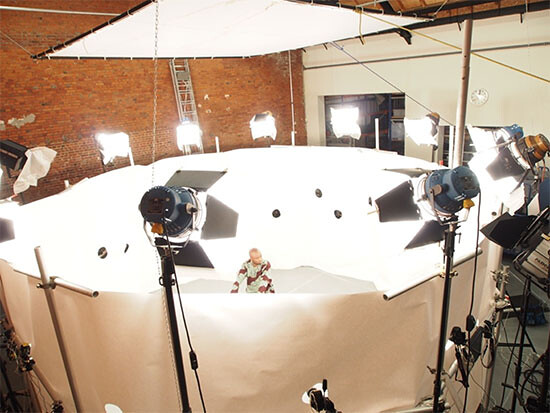

Vilém Flusser explains that those moments in history when the balance between representation and linear thinking gets disturbed are moments of great danger. Especially when the varieties of linear thinking, like linear writing or the production of history, weigh heavier in the balance. Such a moment occurred during modernity. I understand from Flusser that photography and its apparatus allowed for a semi-automated production of contingency, and magic, prohibiting and preventing radical, fundamentalist ideas from maturing unchecked. The magic of photography produces a possibility of another, uncontrollable situation, restoring the nevertheless explosive balance between representation and linear thinking.
I should add that I never particularly liked psychological realism in cinema and film montage, because it falls rather too quickly into the grip of narrative, an influence that has affected all forms of art and which is already part of this strange phenomenon taking shape on the horizon. Narrative is this annoying big head with a voice hanging over the scene, which is part of my headache here because of the way it coaches perception.1
Ultimately, I appropriated some cinematographic skills, until my studio—populated by old-timers of the camera and traditional arts—rebooted itself as an animation studio and thus, once again, began to resemble a painting studio with lots of pupils and “easels.”
Pictorial 3-D produces images generated with the help of geometric shapes, polygons that are subsequently textured, their surfaces structured and lit by virtual light sources which mimic real-world lighting in ways that are astonishing. As a traditionally trained painter and draughtsman who later studied film technique on his own, I was stunned by the intense overlap between Western historical painting and cinematic techniques, which were applied as if the modern rift had never occurred. I am, in other words, stunned by the radical conservatism of 3-D. I would never have expected that so many sciences would come together to form a mighty bastion of pictorial, “realistic” conservatism. Even the most radical undertaking is in one way or another pre-corporated. Maybe our current situation is the result of decades of web-thinking, of dwelling within an infinitely expanded horizontal web or network and the lack of a sense of topos this produces.


The new way of image-making is all-encompassing and includes methods that date as far back as the Renaissance, requiring the artist to master all of the traditional skills of painting, cinematography, and sculpture, and to have a degree in computer science. In big production studios tasks are broken down into numerous specialties which perhaps make it appear abstract, but in my studio, where a few people manage “everything,” the enormity of it rises right in front of our eyes and leaves me, at least, perplexed.
When working in pictorial 3-D, an artist is working in a finite, disenchanted world. Whatever is to be created will be created from memory, after the fact, based on documents. The visual language is one where the smallest detail in the image is premeditated, and if, by chance, such a detail were forgotten or omitted the result would confront us with that shortcoming in the picture. For example, grass and flowers require choices to be made about the season and geographical area, and whether the grass it is to be wild or cut, which itself requires specifying its proximity to instituted culture. Because if it is cut, who cuts it? And so on. In lens-based photography an image can be produced without deciding these questions authoritatively. Instead, there is a tradition of mutual authentication between who is behind the camera and what is in front of the lens. The photographer and her subject coproduce one another, simultaneously. In pictorial 3-D one must answer for everything, and so every produced image exposes its own ideological motivations. It is in essence no different from tableau painting, about which the most important thing to remember is that it is the opposite of modernist asceticism. Every image becomes an accumulation of decisions, responsibilities, and therefore relies heavily on the known codes of memory and morality. Every image becomes potentially baroque, overflowing with the results of endless discussions and deliberations.
We are no longer in a world of contingency, of possibilities created by the collaboration of lens and world—that magical environment—but have become makers of everything down to the smallest detail. We are playing God, and by god, not even God had time to think of all these elements. No. God is a shortcut here: an assumption that further betrays the ideals of which we are unaware but according to which we nonetheless think and observe. This total fabrication implies that we are “observing from memory” and brings with it a sense of nostalgia and a feeling of loss, of having given up on a naive perception that supposedly happened spontaneously, without thinking. Such perception is remembered as being happy, because it was Unbewusst, unconscious—remember that consciousness, Bewusstsein, is unhappy—unencumbered by observing one’s own thinking, as Flusser reminds us in his simple but beautiful elaborations on representation (Vorstellung) and consciousness (Bewusstsein).
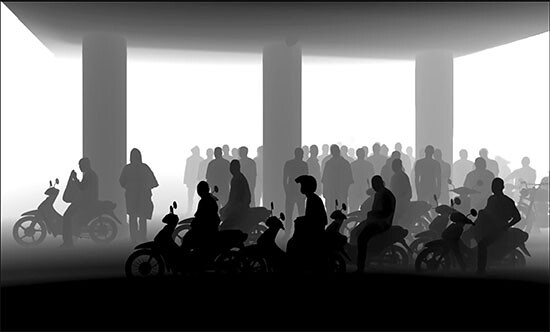

I—like may others—feel that Vorstellung better depicts the paradox that in order to see something, you have to put something in front of it. Bewusstsein implies stepping out of one’s own subjectivity, standing next to oneself, and observing one’s own situation. I would imagine that for Freud, the lens-based photograph is like the successfully cured patient, who is not turned inwards questioning his own state of happiness, but happily goes about absorbing light sensitively. Pictorial 3-D would then be a living person gone blind, spending days compulsively retracing what lies in the past and reaffirming it into the present.
This gets more worrying with what I call, somewhat simplistically, second-generation 3-D perception, which is born without having seen the world, so to speak, and which does not have living memory to rely upon for pictures. A good example of this is the concept of the scan. Scanning differs from photography in that a scan literally moves like a mole in the dark. It does not need daylight to record, while photography is by definition a medium of hope because light is its essential condition.
Scanning records only what we could hit or what could hit us in the dark. It reduces the world to a collection of obstacles. Scanning is a logic of avoiding, while photography follows the logic of encountering. Scanning is oriented towards security, towards determining what is close, or perhaps too close for comfort. We scan for threats.
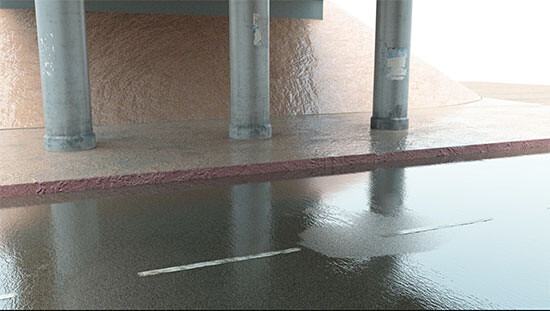

The scan would not have been developed without American defense systems, both military and personal (sometimes I see no difference). At the risk of going too far astray: unlike the photograph, a scan defines individual, personal space around “me”—a scanner is the scared individual who has sensors around him.
Sometimes I feel that we are moving back to the nineteenth century, and have arrived at a place before the modern revolutions, back again to feudalism. This becomes obvious with the well-organized increase of inequality, the new conservatism, and a return of the tableau.
By referencing the tableau and the return of the masterpiece I am trying to draw attention to who is in control and who produces images. Image culture is the fruit of a centuries-long process that rendered the proletariat or the structurally illiterate “verbal,” allowing them to produce a language that would be faster and more compact than linear writing, which until then held all the tools of power and put history on paper. I am not suggesting that image culture is the result of an organized revolution by the illiterate, but only indicating the brilliant and frankly moving appropriation of the speed and power of communication previously held by those with political power.
The masterpiece-conclusion can be seen as a sad note, as the return of the master and the end of emancipation. Modern artists were mainly working from a sense of ascetic exclusion. They would rather have “all that was” broken than to continue in a sphere of inclusion, or more accurately: incorporation. To listen to a master, to pay rent, to be incorporated in the sphere of power is unavoidable today, it would seem. The production of tableau is, in this respect and as I understand it, the opposite of the photographic apparatus and its semi-conscious production of images.
If photography came and eradicated the tableau, well, the tableau is back, this time not merely as a picture but as a masterpiece.2 The tableau returns alive and well as ideology, waving a definite goodbye to the sensitivity of that modern invention, photography, and its thick glass window on the world, in a renewed attempt to impose order on our thoughts.
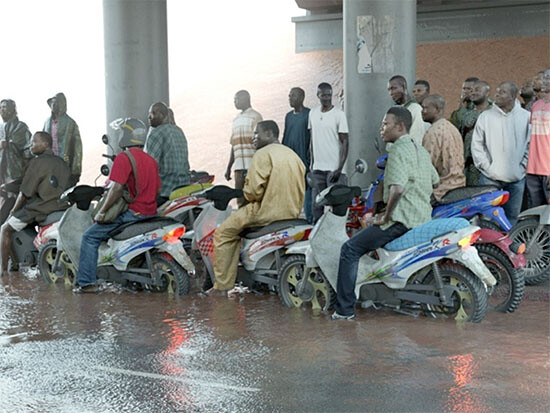

I call this the world of pure ideologies, where striving towards something is no longer needed because satisfaction is immediate, because the outgoing and the incoming perceptions are instantaneous and equal in strength. This is similar, in some ways, to what Baudrillard once described as “the ecstasy of communication,” wherein “all secrets, spaces and scenes [are] abolished in a single dimension of information.” This condition relegated the pathologies of hysteria and paranoia to the past and instead inaugurated an era of generalized schizophrenia, which is characterized by “the absolute proximity, the total instantaneousness of things … It is the end of interiority and intimacy, the over-exposure and transparency of the world which traverses us without obstacle.”3
Some time ago I tried to explain to an acquaintance what I meant by pure ideologies. It was in vain, until the next day when she described taking a magnificent picture with her iPad as she was watching the sun come up on the horizon. She showed the picture to me. It was indeed one of those images we would all like to see upon waking. Incredible colors, the sun perfectly placed, and below, an undulating countryside where animals and people are peacefully asleep.
I asked her how much of the picture she thought she had taken herself. The vantage point is indicated by the IP address of the device. So is the weather, season, and time of day. Actually, algorithmic processes can “guess” the ideal moment for photographing such a wonderful daybreak, so as to raise the mood of the average person. There was nothing of herself in what she showed me, beyond the coincidence of technology with itself.
In fact, the image was so wonderful to her because it corresponded exactly with the splendor that resides in her memory. We often feel deeply happy, don’t we, when we encounter a situation that is also seated warmly inside our memory. We are gratified when observing exists in sync with remembering, holding no nasty surprises, but being an affective revisiting of an old situation as if it were an old friend.
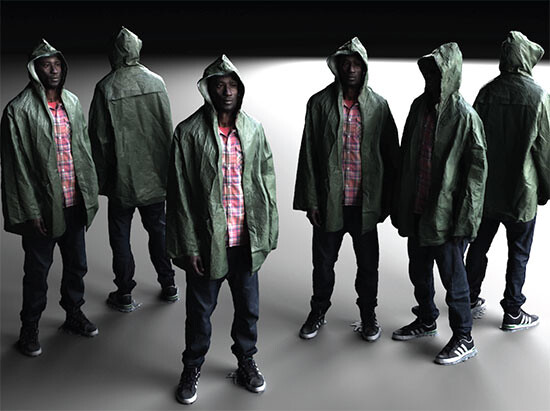

It is said that a person who has gone mad sees things that are not there. We call these things “projections.” Abnormal psychology distinguishes three types of pathology: anxiety disorders, mood disorders, and personality disorders. The first are unhealthy emotional responses to external stimuli. The second are emotional cycles that take place entirely irrespective of anything outside the self. And the third involve the breakdown of self-identity, as with schizophrenia. If the schizophrenic could take a step back, out of the affected self, they would understand their delusions to be delusions, at which point these delusions would vanish, and self-understanding would return. It is precisely this action of stepping out of the image that enables us to make a Vorstellung—to put an image in front of the thing, or to make a representation from memory. The German word, which translates literally as “in-front position,” suggests that such constructs obscure the sight of the real.
When images internal to the psyche “appear” or surface on the retina and are projected back inwards before making contact with the world, they generate looping pulses that turn the mind into a continuously repeating mental prison.
This happens, for example, when the affective link with the world is broken, or heartbroken, and in order to handle the grief one has to enter into the isolation I am trying to describe. We may think of this as a terrible thing to happen—and it is—but it also describes a larger social project collectively taking shape. My friend’s photograph of the sunset is a document of madness not because it is a delusion, but because it suggests that she had a role in producing it, and this is the delusion. Unlike Baudrillard’s schizophrenic, who cannot locate the borders of the self in the world of mass media, the world of pure ideologies perpetually projects borders onto the self that in fact do not exist, deluding us into thinking we produce some particular view on the world, when we do not. The lens was a machine for producing not only images, but authors and worlds as well. But now it has fallen silent. In the past, one had to believe that one was really a long-dead king or an alien from outer space to suffer from delusions of grandeur. Tomorrow it will be enough to consider oneself a photographer.
The other thing that bothers me about cinema is that it manages to eliminate itself, to make people think they hate good cinema, and thereby gets itself forced into retreating to the internet or into low-budget productions.
My worry is that for the tableau to be so successful again, it must mean be that there are illiterates of image culture, who will be dominated once again by those who have the power of words. This is why I feel that images are once again produced by words, and why I fear that a premodern blindness is back. Economically, it is not hard to see that feudalism has returned, but every economy is the result of a vision. The current vision holds that the party is over, that the holiday gone on long enough, and it is time to go back from where the poverty came: spending every day of one’s life struggling, gradually forgetting the party.
Jean Baudrillard, “The Ecstasy of Communication,” in The Anti-Aesthetic: Essays on Postmodern Culture, ed. Hal Foster (New York: New Press, 2002), 133.
